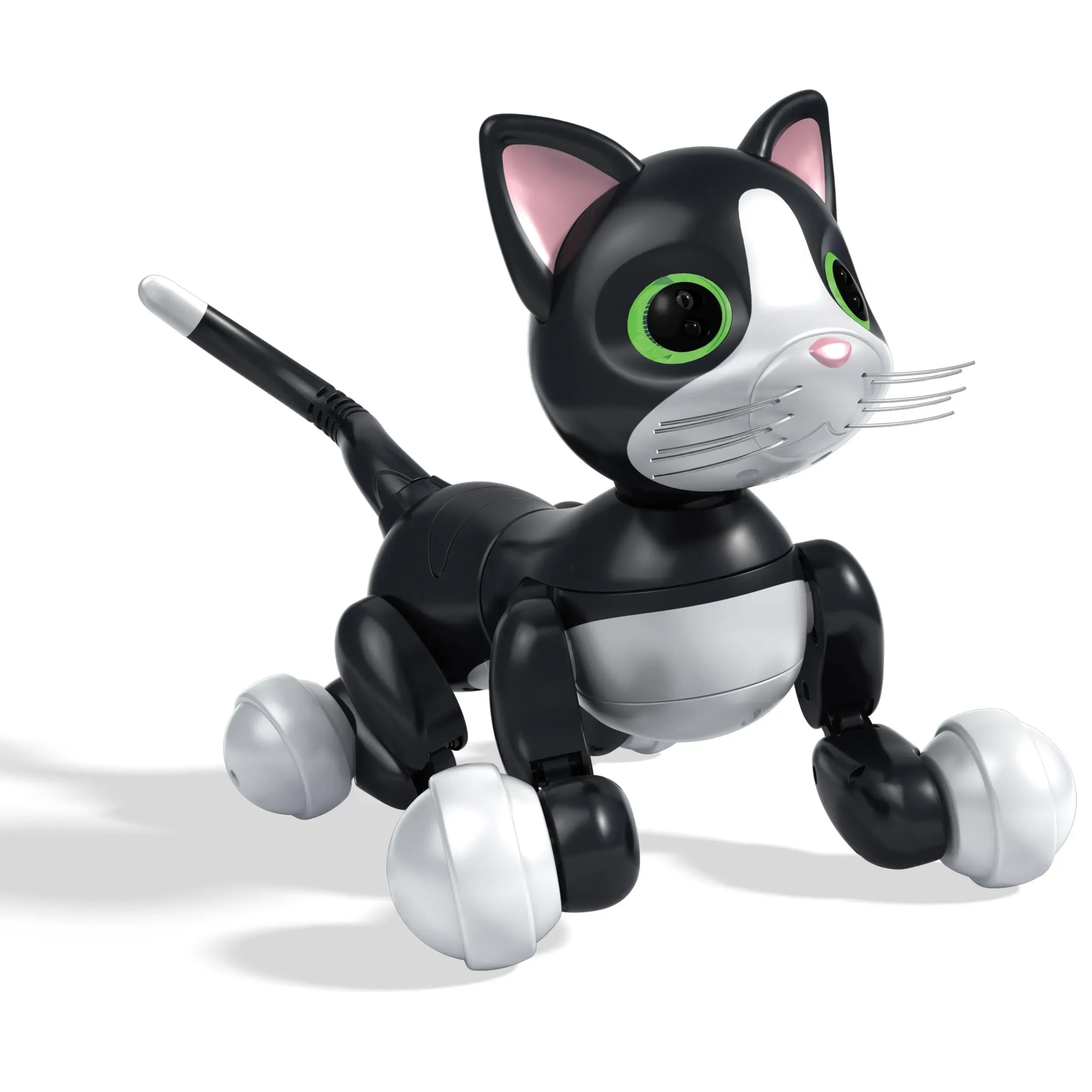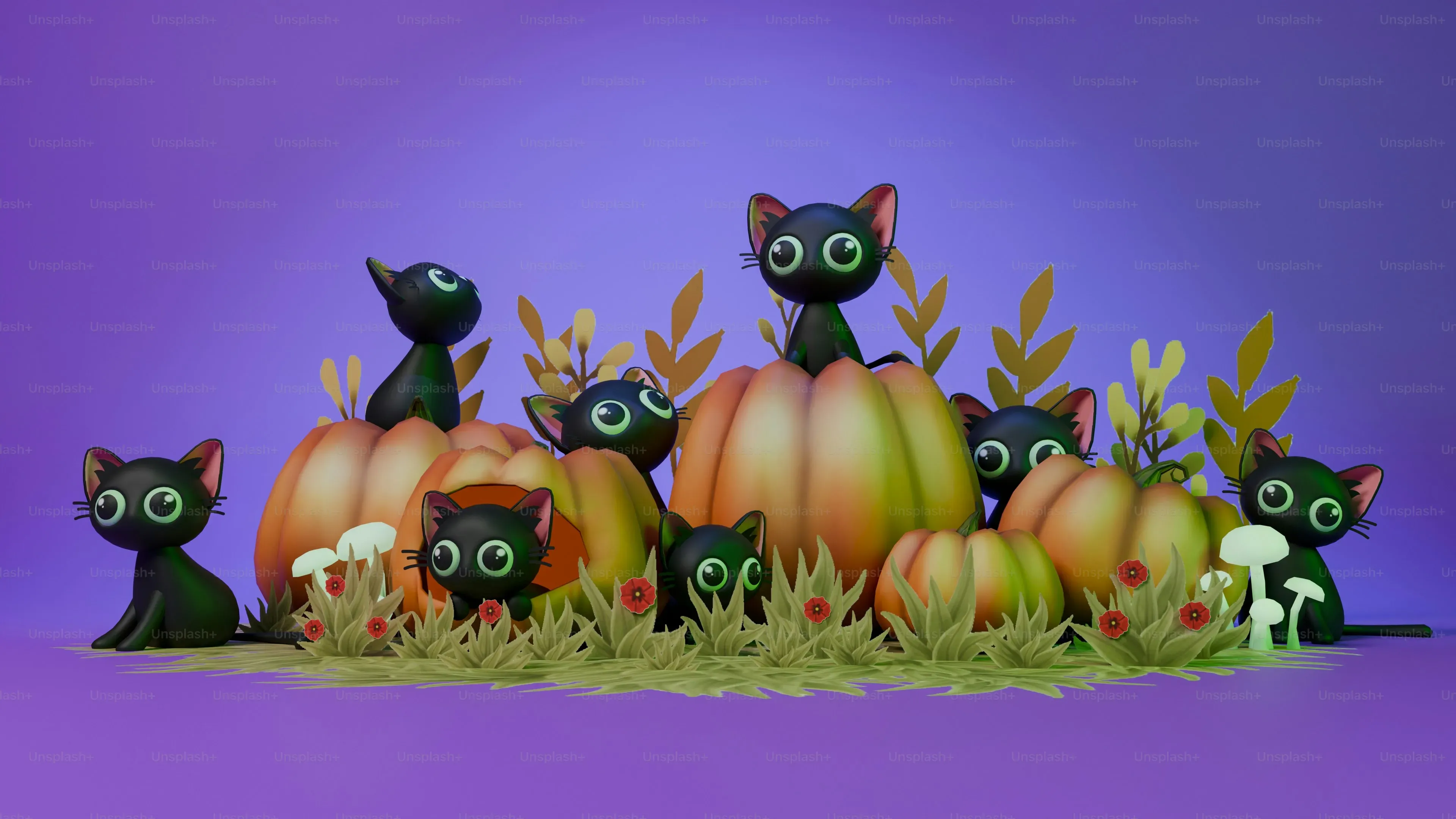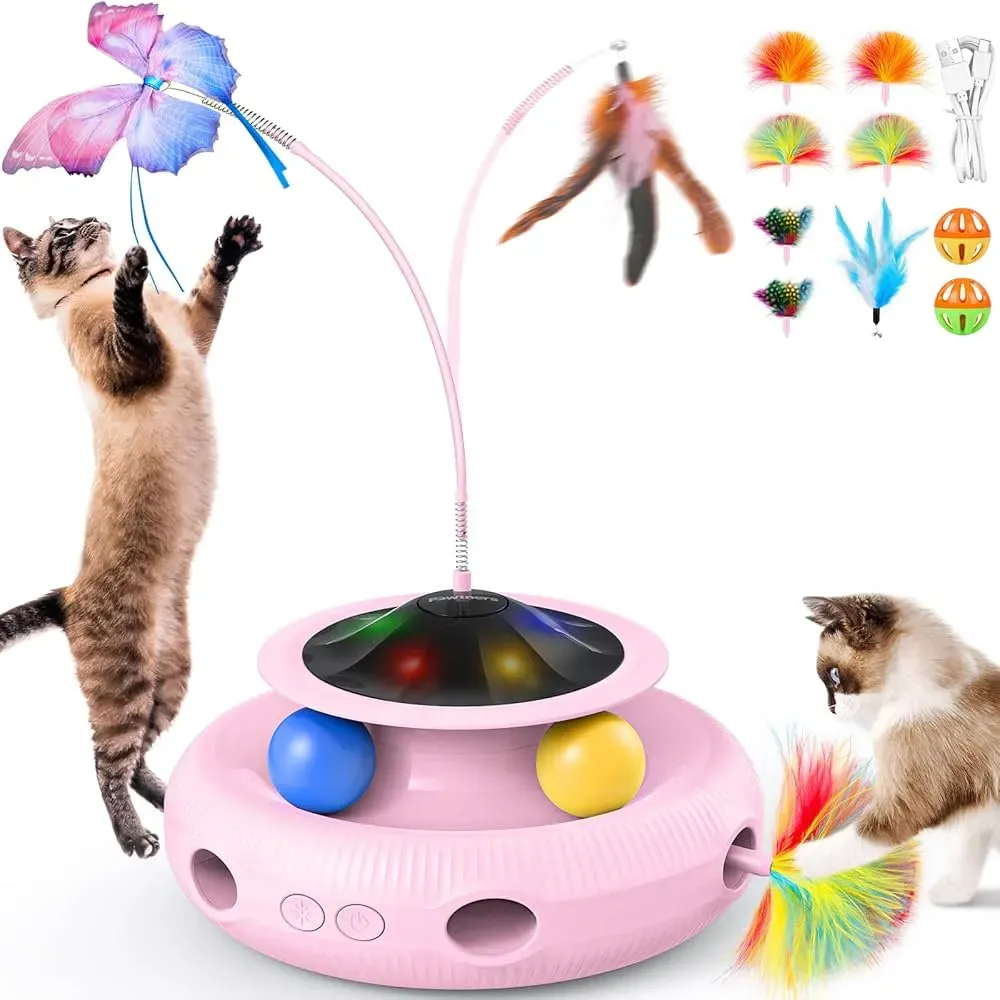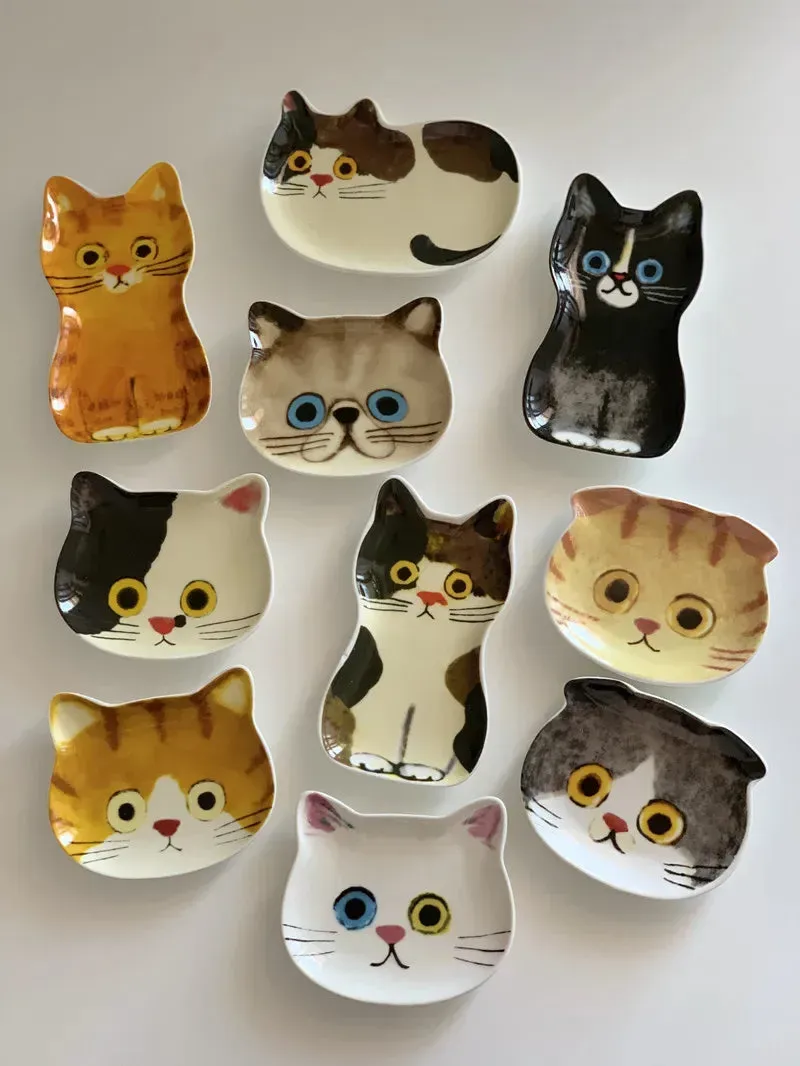Table of Contents
Got a feline friend who treats your furniture like a scratching post or stares blankly out the window like they're contemplating the futility of existence? Chances are, they're bored. Cats are natural hunters, wired for action and mental puzzles. Confining them to a cozy apartment without an outlet for these instincts is basically asking for trouble – or at least, a perpetually unimpressed stare. This is where **interactive toys cats** need come into play. They aren't just fluffy mice on strings or laser dots; they're vital tools for keeping your cat physically fit, mentally sharp, and less likely to plot the overthrow of your household. Ignoring their need for engagement isn't just unfair; it can lead to behavioral problems and a less happy kitty. So, if you're tired of the ennui or the unexpected ambushes from behind the couch, stick around. We'll dive into why these toys are non-negotiable, explore the dizzying array of options out there, help you figure out which ones your particular fluffball might actually use, and share some tips to make playtime less of a chore and more of a riot. Get ready to turn that couch potato into a pouncing predator.
Why Your Cat Needs Interactive Toys Cats Crave

Why Your Cat Needs Interactive Toys Cats Crave
Unleashing the Inner Hunter
Look, your cat might look like a fluffy, judgmental loaf on your couch, but deep down, they're tiny predators. They're hardwired to stalk, chase, pounce, and "kill." It's not just cute; it's essential to their well-being. In the wild, a cat spends a significant chunk of their day hunting. That entire process – the strategy, the burst of energy, the successful "capture" – provides mental stimulation and physical exercise. When they live indoors, we take away that primary job. This is precisely why your cat needs **Why Your Cat Needs Interactive Toys Cats Crave**. These aren't just frivolous purchases; they are substitutes for the hunt they can't have. Think of a cat chasing a laser dot or batting at a wobbly tower – they're rehearsing ancient behaviors, keeping those instincts sharp, even if their "prey" is made of plastic and feathers.
Avoiding the Boredom Blues (and Bad Behavior)
A bored cat is often a destructive cat. When those natural hunting instincts aren't satisfied through appropriate channels, they find other outlets. That might mean shredding your curtains, attacking your ankles as you walk by, or waking you up at 3 AM with the zoomies because they have pent-up energy. Chronic boredom and lack of stimulation can lead to stress, anxiety, and even health issues like obesity. Providing interactive toys gives them a healthy way to burn energy, engage their brains, and reduce stress. A good play session tires them out in a good way, leading to a calmer, happier feline companion who's less likely to see your favorite armchair as a personal scratching post. It's an investment in their physical health and your sanity.
- Lack of Mental Stimulation: Results in boredom, anxiety.
- Insufficient Physical Exercise: Leads to weight gain, lethargy.
- Suppressed Hunting Instincts: Causes redirected aggression or destruction.
- Weakened Bond: Less engaging play reduces interaction time with you.
Different Types of Interactive Toys Cats Will Love

Different Types of Interactive Toys Cats Will Love
Wand Toys and Teasers: The Classic Hunt Simulators
Alright, let's talk about the bread and butter of **interactive toys cats**. Wand toys and teasers. These are your go-to for direct engagement. We're talking feathers on a string, sparkly danglers, little mice attached to a flexible rod. The beauty here is you're the one controlling the "prey's" movement. You can mimic a bird fluttering, a mouse darting, or an insect buzzing. This erratic, unpredictable movement is pure cat crack. It triggers their chase instinct like almost nothing else. Don't just dangle it in their face; make it hide behind furniture, skitter across the floor, or fly through the air. The goal is to make them work for it, to engage that stalking behavior before the pounce. It builds that human-cat bond too, because you're the bringer of the hunt.
Puzzle Feeders and Treat Dispensers: Brain Games for Breakfast
Moving beyond the physical hunt, we hit the mental game: puzzle feeders and treat dispensers. These are brilliant **interactive toys cats** can play with solo, though they are often more engaging initially with your guidance. Instead of just dumping kibble in a bowl, you put it inside a contraption they have to manipulate to get the food out. Some are simple balls they bat around, others are complex mazes or hidden compartments. This forces them to think, to problem-solve. It slows down eating, which is great for preventing scarf-and-barf syndrome, and it provides crucial mental stimulation. It’s the feline equivalent of a crossword puzzle, but with tastier rewards. Watching a cat figure out how to get that last kibble out of a tricky corner is surprisingly satisfying, and it wears them out mentally just as much as a good chase wears them out physically.
- Wand/Teaser Toys: Great for direct interaction, mimicking prey movement.
- Puzzle Feeders: Excellent for mental stimulation, slowing down eating.
- Automatic Laser Pointers: Provide chasing opportunities (use with caution, always end with a catchable toy).
- Motorized Toys: Offer unpredictable movement for solo play.
- Catnip Toys: Simple, but effective for many cats, especially kickers.
Choosing the Best Interactive Toys Cats Need for Their Personality

Choosing the Best Interactive Toys Cats Need for Their Personality
Figuring Out Your Cat's Play Style
so you know your cat needs to play. Great. But picking the right gear? That’s where it gets tricky. Just like people, cats have personalities, and those personalities dictate how they prefer to hunt (or, you know, pretend to hunt). Some cats are "bird watchers." They love things that flutter and dangle from above. Others are "mouse hunters," happiest chasing things that skitter across the floor. Then you have the "ambush predators," who prefer to hide and pounce. You need to observe your cat. Do they stare intently at birds outside? A wand toy mimicking flight might be perfect. Do they bat at things under rugs? Floor skitter toys are your friend. Are they constantly hiding and launching surprise attacks on your feet? Crinkle balls or small, tossable toys might hit the spot. Understanding their natural inclination is the first step in **Choosing the Best Interactive Toys Cats Need for Their Personality**.
Matching the Toy to the Hunter Type
Once you have a handle on their preferred method of mayhem, you can get strategic with your toy selection. For the bird enthusiast, think long, flexible wands with feather or fabric attachments. Make them "fly" and perch just out of reach before letting your cat "catch" it. For the mouse chaser, small, lightweight toys that you can flick across hard floors or even battery-operated mice that move on their own can be very effective. For the ambusher, crinkle tunnels, paper bags (safely monitored, of course), or toys you can hide and reveal work wonders. Don't be afraid to experiment. What one cat ignores completely, another will become obsessed with. It's a bit of trial and error, like dating, but with less awkward small talk and more pouncing.
- **The Bird Watcher:** Favors wand toys, feather teasers, things that move vertically.
- **The Mouse Hunter:** Prefers small toys that skitter, floor-based movement, things they can chase low to the ground.
- **The Ambush Predator:** Loves tunnels, boxes, toys they can stalk and pounce on from hiding spots.
- **The Puzzle Solver:** Enjoys treat balls, puzzle feeders, toys that require manipulation.
- **The Kicker:** Needs toys they can grab with their front paws and bunny-kick with their back legs (often catnip-filled).
Considering Age and Physical Ability
Age isn't just a number when it comes to playtime; it's a major factor in **Choosing the Best Interactive Toys Cats Need for Their Personality**. A spry kitten can handle fast-moving lasers and acrobatic wand play (with a safe "catch" at the end). An older cat might prefer slower, more predictable movements, or toys they can interact with from a comfortable spot, like a puzzle feeder or a kickeroo. Arthritic joints mean less jumping and more ground-based play. Make sure the toys aren't too small for larger breeds or too heavy for smaller ones. Observe how they move and what their physical limitations might be. Providing toys that are appropriate for their current stage of life ensures they can actually engage with them safely and enjoyably, rather than becoming frustrated or injured.
Maximizing Playtime: Tips for Using Interactive Toys Cats Effectively

Maximizing Playtime: Tips for Using Interactive Toys Cats Effectively
Becoming the Ultimate Play Partner
you've got the gear, you know your cat's style, now how do you actually *do* this play thing right? It's more than just waving a wand around aimlessly. The key to maximizing the effectiveness of **interactive toys cats** adore is to mimic the hunt sequence. This means stalking, pouncing, catching, and then the "kill" bite. Don't just dangle the toy in their face; make it move *away* from them. Hide it behind furniture, let it peek out, then dart away. This triggers their natural stalking behavior. Let them chase, let them pounce, but don't make it too easy initially. Build a little frustration, a little challenge. Then, allow them to "catch" the toy. Let them grab it, bunny-kick it, feel like they've succeeded. This is the crucial part – the "kill." Without the catch, chasing a laser pointer forever, for example, can actually be frustrating because they never get that satisfying conclusion to the hunt. Always end a laser session by immediately switching to a physical toy they can sink their claws into.
Keeping Play Fresh and Engaging
Cats, bless their independent little hearts, can get bored. If you use the same toy the same way every single day, they'll lose interest faster than you can say "nap time." Variety is key when using **interactive toys cats** won't get tired of. Rotate toys. Keep some put away and bring them out every few days or weeks. This makes them feel new and exciting again. Pay attention to their body language during play. Are their eyes dilated? Are they wiggling their butt before a pounce? Are they losing interest and just watching? Adjust your technique or switch toys if they seem disengaged. Keep sessions relatively short, maybe 10-15 minutes, but do them regularly, ideally a couple of times a day, especially around their natural hunting times (dawn and dusk). And always, always supervise play with wand toys or strings to prevent them from ingesting pieces that could cause problems later.
- Mimic the natural hunt sequence: Stalk, Chase, Pounce, Kill.
- Make the toy move *away* from the cat, not towards them.
- Allow your cat to "catch" and "kill" the toy at the end of a session.
- Rotate toys regularly to keep things interesting.
- Observe your cat's body language to gauge their engagement.
- Keep play sessions short (10-15 mins) but frequent.
- Always supervise play, especially with string or small parts.
Beyond the Toy: The Bigger Picture of Play and Interactive Toys Cats

Beyond the Toy: The Bigger Picture of Play and Interactive Toys Cats
More Than Just Fun and Games
so you've got the arsenal of **interactive toys cats** go bonkers for, you're a master of the wand wiggle, and your cat is no longer eyeing your toes like potential prey. But the impact of consistent, engaging play goes way beyond just a tired cat. It's about building trust. It's about communication. When you take the time to play with your cat, you're speaking their language. You're showing them you understand their needs, their instincts. This shared activity strengthens your bond in a way that simply sharing a couch never can. It reduces stress for both of you, provides a reliable outlet for their energy, and frankly, it's just plain fun to watch them get their hunt on. It’s an investment in a happier, healthier relationship with your feline overlord, ensuring they see you as a benevolent provider of awesome hunts, not just the servant who fills the food bowl.
- Stronger human-cat bond through shared activity.
- Improved communication and trust.
- Reduced stress and anxiety for both cat and owner.
- Consistent outlet for natural instincts.
- Increased overall happiness and well-being.
The Final Pounce: Making Play a Priority
So there you have it. Ignoring your cat's need for stimulation isn't just being a negligent pet parent; it's actively contributing to a potentially unhappy, unhealthy, and destructive creature sharing your living space. Interactive toys aren't a luxury; they're a necessity for a creature hardwired to hunt and explore. You've seen the options, understood the 'why,' and hopefully, have a better idea of what might actually capture your cat's fleeting attention. It takes effort, yes, more than just tossing a dusty mouse under the sofa, but the payoff – a healthier, more engaged cat who perhaps isn't plotting your demise during their idle hours – is worth the minimal investment of time and toys. Go on, give your cat a reason to stop staring into the void. They might even thank you, probably by not shredding your curtains today.